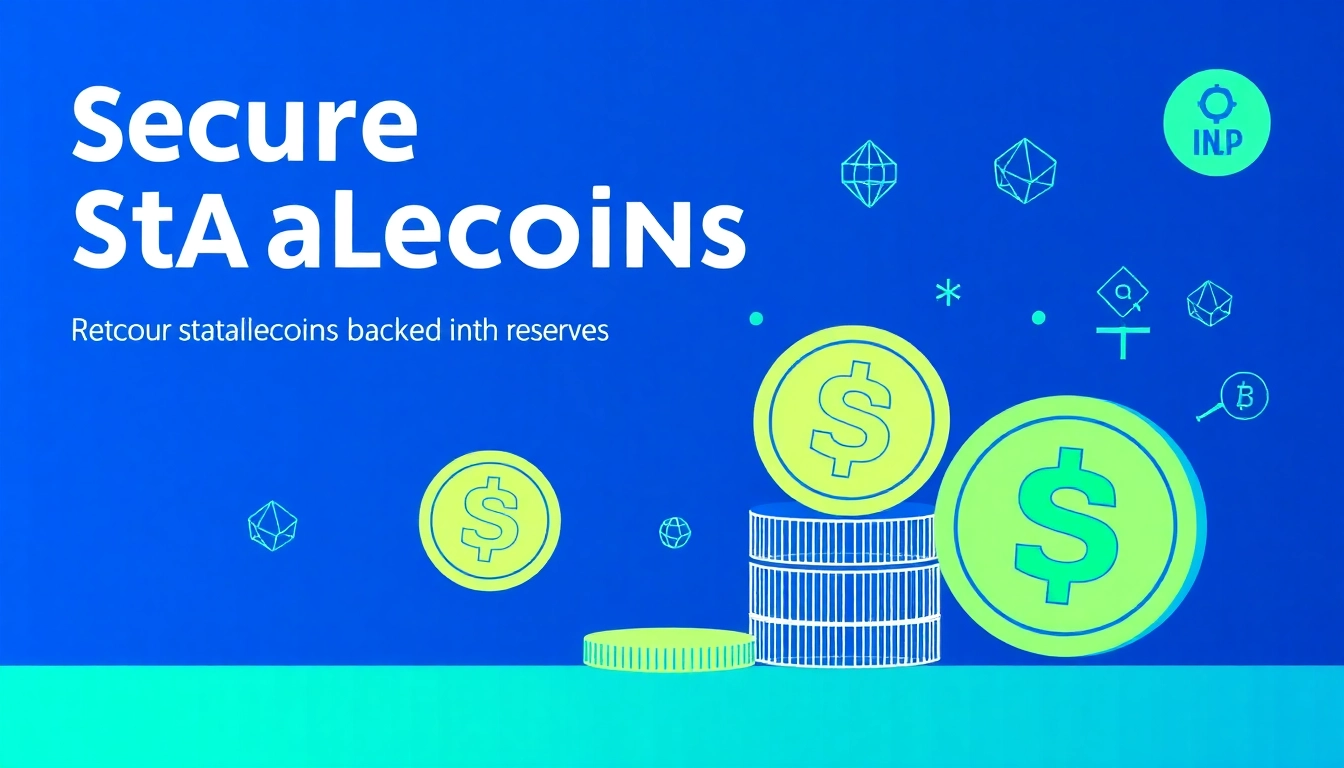Understanding Stablecoin Regulations and Their Importance
In the rapidly evolving landscape of digital currencies, stablecoins have emerged as crucial instruments bridging traditional finance and blockchain technology. Designed to combine the stability of fiat currencies with the efficiency of cryptocurrencies, stablecoins facilitate seamless transactions, liquidity management, and financial inclusion. As their adoption accelerates globally, regulatory frameworks around stablecoin issuance and operation have become a focal point for policymakers, investors, and industry stakeholders. Ensuring proper regulation is vital not only to protect consumers and maintain financial stability but also to foster innovation within a transparent, trustworthy environment. For anyone navigating the crypto ecosystem, understanding stablecoin regulations is essential for aligning compliance, risk management, and growth strategies.
What Are Stablecoins and Why Regulate Them?
Stablecoins are digital assets designed to maintain a stable value, commonly pegged to fiat currencies like the US dollar, euro, or yen. They serve as a practical medium for transactions, remittances, and as a store of value, especially in volatile markets. Unlike traditional cryptocurrencies such as Bitcoin or Ethereum, which are subject to drastic price swings, stablecoins aim to provide the stability necessary for everyday use and institutional adoption.
Regulating stablecoins is imperatively linked to mitigating financial risks, preventing fraudulent activities, and ensuring monetary sovereignty. Without a proper regulatory framework, stablecoins could pose systemic risks if poorly backed or if operations are opaque, leading to potential runs, loss of assets, or market manipulation. Additionally, stablecoins can influence national monetary policies, cross-border payments, and global economic stability, reinforcing the need for comprehensive oversight.
Current US Stablecoin Legal Framework and Key Acts
The United States has been at the forefront of developing regulations for stablecoins, with the landmark passage of the GENIUS Act of 2025 marking a significant step. This legislation mandates that stablecoin issuers hold sufficient reserves, primarily in short-term Treasury bills, to fully back their tokens at a 1:1 ratio with the US dollar. The act also requires rigorous reporting and transparency standards, making stablecoins more accountable to regulators and the public.
Besides reserve requirements, the GENIUS Act prohibits stablecoin issuers from offering interest or yields to holders, aiming to avoid speculative practices and maintain stability. Limitations on market capitalization—less than $10 billion for certain regulatory benefits—also define the scope of compliance, encouraging responsible issuance and risk management. These legal measures aim to enhance consumer confidence and create a safer environment for innovation.
Global Trends and Comparative Regulatory Approaches
Beyond the US, nations across Asia, Europe, and other regions are adopting diverse strategies to regulate stablecoins. For example, the European Union’s Markets in Crypto-Assets (MiCA) framework aims to create a harmonized legal environment, emphasizing licensing, capital requirements, and consumer safeguards. Similarly, Asian regulators, such as in Singapore and Japan, focus on licensing regimes, cold storage mandates, and anti-money laundering measures.
These approaches reflect regional priorities—some emphasizing innovation and growth, others prioritizing stability and consumer protection. The key challenge remains balancing regulatory oversight with fostering technological development. A trend toward international coordination, possibly through standard-setting bodies like the Financial Stability Board, could eventually lead to more harmonized global stablecoin regulations, reducing fragmentation and enhancing cross-border compliance.
Detailed Breakdown of the GENIUS Act and US Compliance Requirements
Reserves, Reporting, and Transparency Standards
The GENIUS Act stipulates that stablecoin issuers must hold reserves equivalent to the total stablecoin supply, predominantly in secure, short-term government debt instruments. This reserve backing is designed to prevent insolvency risks and provide confidence to users. Moreover, issuers are required to submit regular audits and reports to regulators, ensuring ongoing transparency regarding reserve holdings and operational health.
Implementing advanced financial controls and third-party audits is critical to meeting these standards. Firms should leverage blockchain-based transparency tools combined with traditional auditing processes to demonstrate reserve adequacy continually.
Market Capitalization Limits and Regulatory Options
The legislation restricts stablecoins with a total market cap exceeding $10 billion from opting into simplified regulation, thus encouraging prudent growth. Larger stablecoins must adhere to more rigorous regulatory requirements, including capital buffers, risk management protocols, and compliance with anti-money laundering (AML) and know-your-customer (KYC) standards.
This tiered approach helps mitigate systemic risks associated with sizeable stablecoins, while smaller issuers benefit from streamlined processes, fostering innovation within controlled boundaries.
Impact on Stablecoin Issuers and Investors
For stablecoin issuers, compliance means establishing robust reserve management, transparency, and regulatory reporting. While initial costs may rise, these requirements foster long-term trust, facilitate institutional adoption, and prevent market disruptions. Investors benefit from increased confidence, knowing that stablecoins are backed by verifiable reserves and operate within a regulated framework, reducing exposure to fraud and insolvency risks.
Impacts of Stablecoin Regulation on the Cryptocurrency Ecosystem
Fostering Transparency and Consumer Confidence
Regulation enhances transparency, cultivating trust among users and institutional players. Clear reserve backing, regular disclosures, and audit commitments create a safer environment for trading, remittances, and DeFi applications. This increased confidence can accelerate mainstream adoption and integration into traditional financial systems.
Risks, Challenges, and Opportunities for Innovation
While regulation aims to reduce risks, it can also pose challenges. Stringent compliance may inhibit small or innovative projects due to increased costs. Conversely, regulated stablecoins can open avenues for sustainable growth, broader usability, and integration with regulated financial markets. Innovative compliance solutions, such as automated audit protocols and real-time reporting, are emerging to address these hurdles effectively.
Compliance Strategies for Stablecoin Projects
To navigate evolving regulations, stablecoin projects should adopt proactive compliance frameworks, including embedding regulatory technology (RegTech), engaging legal counsel early, and establishing transparent governance policies. Emphasizing reserve transparency and continuous auditing aligns with emerging standards and supports scalability.
Future Outlook: Evolving Laws and Global Stabilization Strategies
Emerging Trends in International Stablecoin Policies
The landscape is witnessing increased multi-jurisdictional cooperation, with countries seeking to adopt harmonized standards. Technological advancements such as blockchain-based audit systems and cross-border regulatory data sharing are becoming central to future policies. Furthermore, central banks are exploring digital currencies (CBDCs) that may directly compete or complement stablecoins, shaping the future regulatory environment.
Potential for Harmonized Global Regulations
Achieving global standardization could involve multinational agreements akin to Basel III for banking. Such harmonization would streamline compliance, reduce regulatory arbitrage, and bolster international financial stability. Efforts by entities like the International Monetary Fund (IMF) and Financial Stability Board aim to guide this process, offering frameworks adaptable to diverse jurisdictions.
How to Stay Ahead in a Changing Regulatory Environment
For industry players, staying informed through regulatory intelligence, participating in industry consortia, and adopting flexible compliance frameworks are key strategies. Proactively engaging with regulators and investing in transparency and consumer protection will be crucial for sustainable growth amidst shifting laws.
Practical Steps for Navigating Stablecoin Regulations
Building Compliant Technical Infrastructure
Developing secure, transparent, and auditable blockchain infrastructure is foundational. Implementing real-time audit tools, reserve verification mechanisms, and compliance dashboards ensures adherence to evolving standards. Leveraging smart contracts for automatic compliance reporting can streamline operations.
Legal and Financial Advisory Best Practices
Engaging specialized legal and financial advisors early helps anticipate regulatory changes. Comprehensive legal audits, risk assessments, and scenario planning enable stablecoin projects to adapt proactively, reducing compliance costs and avoiding penalties.
Case Studies: Successful Regulatory Compliance
A notable example is a US-based stablecoin issuer that integrated transparency features layered with third-party audits and real-time reporting dashboards. This approach not only met regulatory standards but also built substantial user trust, leading to broader adoption and partnerships with traditional financial entities.



